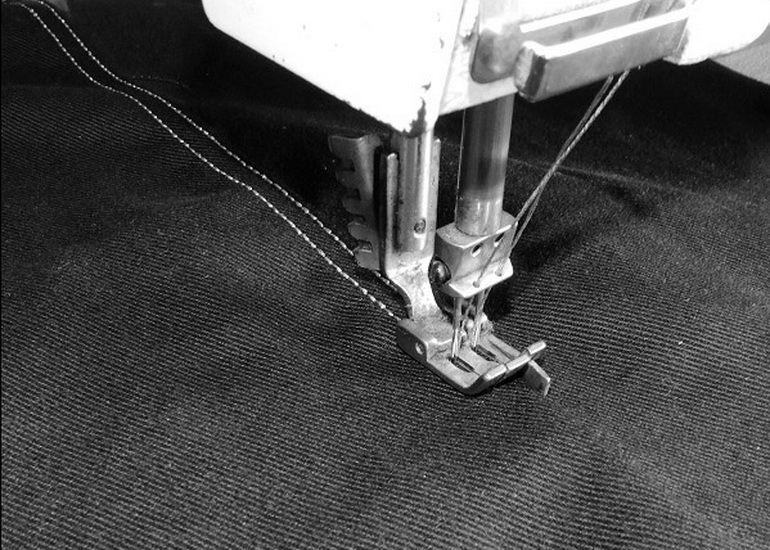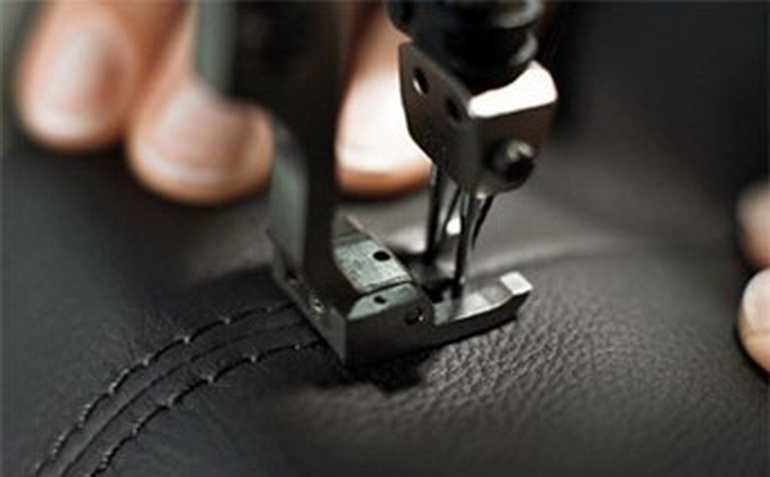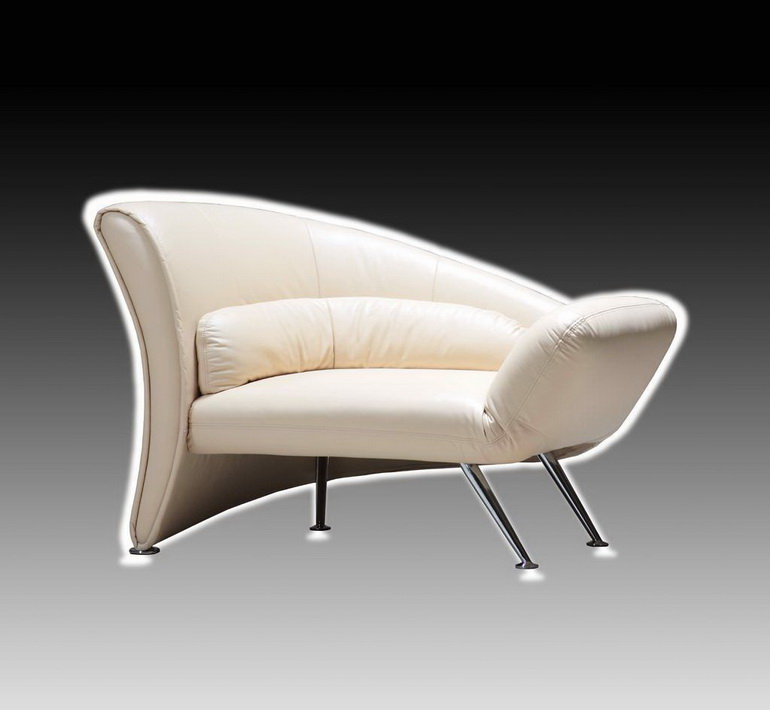
| Cause | remedy |
|
Off the routine when thread coming from thread bobbin |
Ensure that the thread rack is 2.5 times the height of the bobbin directly above the bobbin. Use a sponge cushion to prevent the bobbin from tilting. |
|
The sewing thread stuck on the bobbin of thread. |
Reduce the height of the thread rack to prevent the occurrence of vibration or sewing thread coming out of bobbin. Use a sponge foam cushion to prevent the thread from getting stuck when it comes out. |
|
The sewing thread got stuck at the thread guider. |
This occurred after the sewing thread was broken. Reconnecting the sewing thread correctly. |
|
The thread twisted before the tension regulator. |
Increase the number of threads coils wound on the pre-tensioned thread guider and reduce the stretch force of the tension regulator. Make sure the tension regulator surface is smooth. |
| Too much tension. | Use a more flexible higher tensile strength sewing thread or adjust the tension. |
| Adjust spring damage. | Change and adjust. |
| Needle plate, hook point, protective device of needle, core shell, needle groove or needle eye with sharp edge. | Polish rough edges or replace as necessary. Replace needle with better ones. |
| The sewing thread was worn away by the needle, leaving debris. | Use fine thread or bigger stitches needle as appropriate. |
| Overheated on needle stitches; The groove or eye of the needle is blocked by the melted thread fabric. | Improve the processing of sewing process fabrics. Replace with better needle stitches, design and finish. Lubricate the needle through the sewing thread. Use a needle cooler. |
| Overheated needle tip. | Ensure proper oil supply. Check the gap between the needle and the tip of the hook. |
| The sewing thread is of poor quality. | Replace with a better quality sewing thread that performs properly. |
| Cause | remedy |
| The sewing thread is not wound properly on the thread bobbin. | Adjust the position of the core coiler. Use a permanent bobbin. |
| Tensile strength is too tight or the bobbin speed is too fast. | Adjust the tensile strength of the bobbin cover. Use washers or springs to prevent it to rotate too fast. |
| Sharp edge on bobbin shell, spring or comb hole. | Polish the edges and smooth the surface. |
| The core shell does not fit. | Check the size/type of the core to see if the edges are deformed. |
| Cause | remedy |
| The sewing thread is in poorly condition or mismatched. | Use good quality sewing thread. |
| The surface of high density fabric is not processed properly or rough. | Improve the processing of fabric surface. Replace with a more suitable needle. Use needle coolant. |
| Damaged or overheated needle after broken thread. | Change stitches. |
| Cause | remedy |
| The stitches vibrate or deflect | Change the size of the stitches or use strengthened or needles with reduced diameter gradually. |
| Tip not sharp or set incorrectly. | Change needles. |
| The needle and thread do not match. | Replace appropriate needle or thread size. |
| Feeding teeth appear shaking. | Tighten the feeding teeth. |
| The sewing thread balanced foot springs up. | Reset balanced foot. Replace the cloth feeder. |
| Cause | remedy |
| Improper control of cloth feeding device. | Increase the pressure on the balanced foot. Switch to a more efficient cloth feeder. |
| Cause | remedy |
| The fabric feeding speed varies. | Improve the cloth feeding device. Replace old feed teeth. Reduce maximum seam speed. |
| Too much tension in the sewing thread. | Reduce the tension of the thread bobbin as much as possible and adjust the tension of the needle and thread accordingly. |
| Improperly balanced sewing thread. | Ensure balance between face line and bottom line. |
| The sewing thread used the wrong type. | Use thread with controllable elongation. Maintain proper tension. |
Double needle sewing thread solution
It is difficult to sew well in car trim with double needle sewing line, the main problem is one of the double needle thread direction sewing in the opposite direction of the sewing thread can produce untwisting effect, when sewing thread twisting generally first twist is S twist to twist clockwise (line), after twist is Z lay (counterclockwise twisting), the thread will go in the opposite direction of untwisting effect (the line loose) will further shares, wrinkling, knot to break even. The effect of the sewing is also a loose string, a tight line is ugly.
The core to solve the problem of double needle sewing to avoid untwisting and problems, do not come loose strands of sewing thread can avoid untwisting, No loose strands of sewing thread is twisting inside to join a low melting point hot melt silk, fine twisted line after heating finalize the design, thread internally is bonded into a whole, this do not come loose strands of sewing thread, which we call bonding line, double needle sewing thread with bonding line, adhesion of the sewing thread is like single strands of line to impose force to the eye of a needle, not untwisting, do not come loose strands, is the best to solve the double needle sewing thread choice!
Recommended use: 30# 21D/3 nylon cord 60# 150D/3 polyester cord

Hard and thick material sewing thread solution
Thick, hard material, such as: ABS hard box, 1000 d nylon aiti-wear fabric pull rod box, wear-resisting automobile panel, seat belts, fabric thickness, high density, high temperature in the eye of a needle when sewing, the needle at the scene of the sewing often can see the phenomenon of smoking when sewing machine, the test on the quality of sewing thread will greatly increase the difficulty, ordinary sewing thread, such as: tensile polyester sewing thread, polyester SP line, nylon sewing thread in a generally difficult to resist the temperature when the needle, easy corrugate, loose strands, wire break even.
Meet this sewing requirement, recommend the use of nylon 66 bonding thread, bondi thread is not scattered sewing thread, the use of high temperature resistance, wear-resistant 8.5 grams dener dupont nylon 66 single strand, and through the special bondi process will be three strands in the internal adhesive together, nylon 66 bondi line is characterized by strong tension, temperature resistance, wear resistance. When the needle car passes through the needle eye, the bondi line can be combined with the single force and the whole through the needle eye, so it won't untwist, loose strand or wrinkle and knot. In addition, it can be matched with the high-efficiency and temperature-resistant wax lubrication, so it can be used for sewing in the extra thick and hard fabrics.
Recommended use: fabric surface line: 0# (840D/3) N66 bondi line; Bottom line: 10# (420D/3) N66 bondi
Inner and inner thread: 30# (250D/3) polyester high strength thread; Bottom line 303# polyester SP thread

Solution to Sofa elastic fabric sewing thread
When choosing sewing thread of sofa and related elastic fabric, the elongation of sewing thread must be considered.Because inside the sofa, the soft foam is wrapped with sofa skin , when people sit on it, the sofa will be dented within a distance of 5-15cm according to the hardness of the sofa sponge. Therefore, the sewing seam of the sewing needle will be subjected to huge downward pressure. The elongation of polyester sewing thread is 6-10%. The elongation of polyamide sewing thread is 21-30%. With polyester thread sewing sofa, the sofa of new well seems to be no problem, but by the customer in use process, leather juncture place often because of lack of elongation in the repeated sit since hard to snap line, so, solve the problem of soft sofa sewing thread, first choose resilient nylon sewing thread, so that people sit on it, enough elastic sewing thread will be as the change of pressure corresponding to extend or retract, achieved the best sewing effect of soft sofa!
Nylon sewing thread is made of nylon 6 or nylon 66 single strand sewing thread. Nylon thread is characterized by good luster, abrasion resistance, good elasticity, and can be lengthened or shrunk as the pressure increases or decreases. When the sewing thread is stretched by 5-8%, it can recover 100% of the original length of the elastic thread. If the strands are bonded internally through a special process, the effect of non-loose strands can be achieved. This is our main nylon cord, also known as nylon cord. When the bond line is passed through the eye of the needle, it is not easy to break because of the single force, no untwist, no loose strand, no wrinkle. Sewing line strong, straight texture, sewing effect is more ideal!
Recommended use: 10# (420D/3) nylon sewing thread 10# (420D/3) nylon cord

Solution to Automotive interior sewing thread
In automobile industry, safety is the top priority. Sewing thread is used in the steering wheel, airbag, seat belt, seat, panel and interior decoration.
Steering wheel hand stitching: choose 5# (630D/3) nylon 66 cord, with appropriate elasticity, good tension, wear-resistant, can make the joint strong and compact, the waterproof function of cord can prevent sweat infiltration.
Seat-belt sewing thread: seat-belt is one of the safety accessories of the automobile. Lock the seat-belt accessories with the computer aided square stitching. Choose 10# (420D/3) bondi or special thread and sew it with 18-22 close stitches per inch to reach 1000 lbs. of seam strength.
Airbag sewing thread: 20# (280D/3) N66 bondi thread can be selected to achieve precise and meticulous sewing effect.
Panel decoration, seat sewing thread: choose different thickness of 210#, 135#, 90#, 70# nylon bondi thread according to the design effect, so that the seam has a strong, beautiful line trace, wear-resistant, textured sewing effect.
Recommended use: 210#, 135#, 90#, 70# N66 bondi line, feature line


Sweep yards to contact us